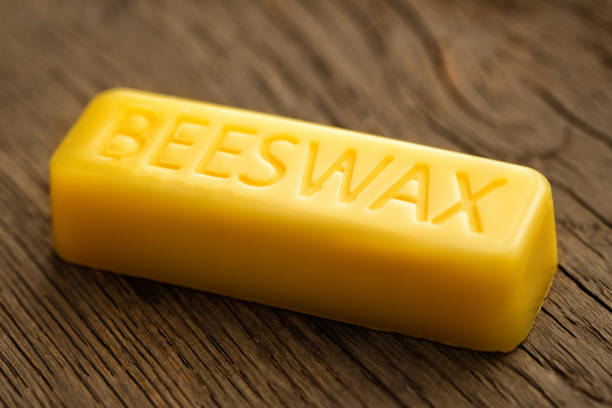The Fascinating Process of Beeswax Production 🐝✨

It all begins with a flower in the field. Worker bees collect nectar and pollen, bringing it back to the hive where it transforms into beeswax and honey. While honey serves as their primary food source—especially during winter—it also plays a crucial role in producing pure, natural beeswax.
How Do Bees Make Beeswax?
Beeswax production is essential for the survival of the colony. This incredible substance is used to construct the honeycomb, where bees raise their young and store honey and pollen. Worker bees—who live only around 35 days in the summer—develop special wax-producing glands on their abdomens between days 10 and 16 of their lives. These glands convert honey sugars into wax, which is secreted as tiny flakes.
🔹 Did you know? It takes approximately 6-8 pounds of honey to produce just 1 pound of beeswax!
How Do Bees Shape the Wax?
At first, beeswax flakes are transparent, turning white after being chewed. The mastication process—where bees soften the wax with their saliva - gives it its flexibility and natural colour variations. The wax is then carefully shaped and applied to the comb.
🔹 Amazing Fact! Bees use their hind legs to transfer wax flakes to their mandibles, where they chew it into shape before applying it to the hive structure.
Why Is Beeswax So Important?
Beeswax is the foundation of the hive, serving multiple purposes:
✅ Honeycomb Construction – Forms the iconic hexagonal cells, which are the most efficient and space-saving design in nature.
✅ Pollen & Honey Storage – Acts as a protective container for food supplies.
✅ Brood Rearing – Provides a safe environment for developing bee larvae.
The Perfect Honeycomb – Nature’s Engineering Marvel
A honeycomb is made up of hexagon-shaped cells—a shape proven to:
🔹 Use the least amount of wax while maximising storage space.
🔹 Be incredibly strong while remaining lightweight.🐝
🔹 Fun Fact! The hive’s temperature stays at 35°C (95°F)—the perfect condition for shaping beeswax. Bees even fan their wings to control the airflow, speeding up the honey-curing process!
Why Does Beeswax Change Colour?
Fresh beeswax starts white but darkens over time. Shades range from golden yellow to deep brown, depending on age and hive use. In the past, beeswax was chemically bleached, but today, ethical producers—including us at Beeswax Bay Farm—preserve its natural purity.
Pure, Natural Beeswax – Just as Nature Intended
At Beeswax Bay Farm, we source 100% natural beeswax, free from chemicals and additives. Whether used in our hand-poured beeswax candles, eco-friendly beeswax wraps, or moisturising balms, each product reflects our commitment to sustainable beekeeping.🔗 Explore our handcrafted beeswax products here! https://www.beeswaxbayfarm.co.uk/shop